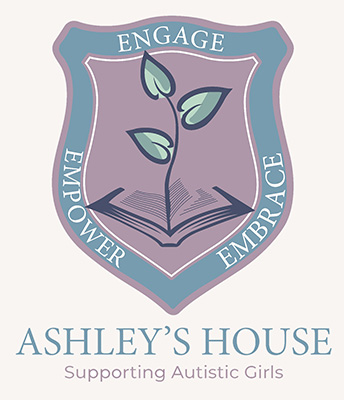Alexithymia is a condition characterised by difficulty identifying and describing one’s emotions. It often involves challenges in recognising emotional states, understanding the emotional experiences of others, and distinguishing between emotions and bodily sensations. Research has shown that alexithymia is prevalent in both neurotypical and neurodivergent populations, but it is particularly important to understand how it presents in autistic individuals, especially autistic girls.
Autistic Girls and Alexithymia
In general, autism spectrum disorder (ASD) is underdiagnosed in girls, partly due to differences in how autism manifests in females compared to males. Autistic girls often display subtle or more masked behaviours and may be more adept at camouflaging their symptoms, which can make identifying issues like alexithymia more challenging.
Key Features of Alexithymia in Autistic Girls:
1. Difficulty Identifying Emotions:
- Autistic girls with alexithymia may struggle to identify their own emotional states, such as distinguishing between sadness, anxiety, or anger. This makes it harder for them to express their feelings verbally or through behaviour.
2. Trouble Describing Emotions:
- They often have difficulty finding the right words to describe what they are feeling. Instead of using words like “I’m sad” or “I feel frustrated”, they may instead say, “I don’t know how I feel.”
- There may also be confusion about how to label emotions, with some girls using physical symptoms (e.g., stomach aches, headaches) to describe emotional states.
3. Challenges in Emotional Regulation:
- Autistic girls with alexithymia may have more difficulty managing emotions. They may react to situations with intense emotional outbursts, as they are unable to process or regulate their feelings effectively.
- They may also experience heightened levels of anxiety or frustration when they cannot make sense of their emotions or communicate them clearly.
4. Emotional Insight and Empathy:
- These girls may struggle with empathy, not because they do not care about others but because they have difficulty understanding and relating to other emotions.
- The inability to identify and differentiate emotions might make it difficult for them to understand how others feel, which can affect social interactions.
5. Social Communication Difficulties:
- Autistic girls with alexithymia may find it difficult to use emotional language in social interactions, which can hinder their ability to connect with peers.
- They may also face challenges in reading the emotional cues of others, leading to misunderstandings in social situations.
6. Internalising Behaviours:
- Because girls are often socialised to hide or suppress their emotions, autistic girls with alexithymia may internalise their emotional struggles rather than acting out. This can lead to increased anxiety, depression, or other mental health concerns.
Factors Contributing to Alexithymia in Autistic Girls
1. Socialisation and Gender Expectations:
- Girls, in general, are often expected to be more emotionally expressive and socially adept, so if they are autistic or alexithymia, these expectations can create additional pressure. The mismatch between social expectations and their internal experience can lead to confusion and emotional dysregulation.
2. Masked or Camouflaged Symptoms:
- Autistic girls often mask their symptoms, meaning they hide or suppress behaviours that might be perceived as “autistic,” such as repetitive behaviours or difficulty with social interaction. This masking can include trying to hide difficulties with emotions, which may contribute to a lack of emotional expression or self-awareness.
3. Neurobiological Factors:
- There may be neurobiological factors that contribute to alexithymia in autistic individuals, including differences in brain regions involved in emotional processing (such as the amygdala and the insula).
- These neurobiological differences could impact how emotions are recognised, processed, and regulated, particularly in the context of autism.
4. Comorbid Mental Health Issues:
- Many autistic girls with alexithymia also experience co-existing conditions such as anxiety, depression, or sensory processing issues, which may exacerbate difficulties with emotion recognition and regulation.
5.Language Development Delays:
- Language development challenges, common in autism, can also hinder the development of emotional vocabulary. Without the words to describe emotions, children may have trouble making sense of and expressing how they feel.
Support and Intervention:
1. Emotional Awareness Training:
- Teaching girls to identify and label their emotions can be a first step in addressing alexithymia. This could involve using visual aids (e.g., emotion cards), discussing feelings in a structured way, and using role-playing to practice emotional scenarios.
- Therapy or programs that specifically address emotional awareness can be beneficial, such as social skills training or cognitive behavioural therapy (CBT).
2. Mindfulness and Emotion Regulation Strategies:
- Mindfulness exercises and relaxation techniques can help improve emotional regulation by allowing children to pause and reflect on their emotional states before reacting.
- Techniques such as deep breathing, grounding exercises, or progressive muscle relaxation can help autistic girls with alexithymia manage their emotions more effectively.
3. Support for Social Communication:
- Building social communication skills is important, especially in learning to recognise social cues and emotional expressions in others. This can include using social stories or structured interaction routines to practice recognising and responding to emotional states.
4. Encouraging Expression in Safe Spaces:
- Girls with alexithymia may benefit from environments where they can express their emotions without fear of judgment. Art, journaling, or other creative activities can provide an outlet for expression when words are difficult to find.
5. Parent and Caregiver Training:
- Educating caregivers about the nature of alexithymia and its relationship to autism can help them better support the child. This includes learning how to create a supportive, non-judgmental environment and helping the child label and understand emotions.
6. Individualised Therapy:
- Some therapies focus on the connection between emotions and bodily sensations. For example, interventions might include body-awareness techniques that help children identify how different emotions feel in their body, which can be a stepping stone toward verbalising those emotions.
Alexithymia in autistic girls presents unique challenges, but with targeted interventions and support, it is possible to help them develop greater emotional awareness and regulation. This process requires an understanding of the intersections between autism, gender, and emotional development, as well as the development of personalised, compassionate strategies to support the child’s growth and well-being. Recognising the emotional world of autistic girls and offering tools for self-expression can lead to better emotional health and social connection.



